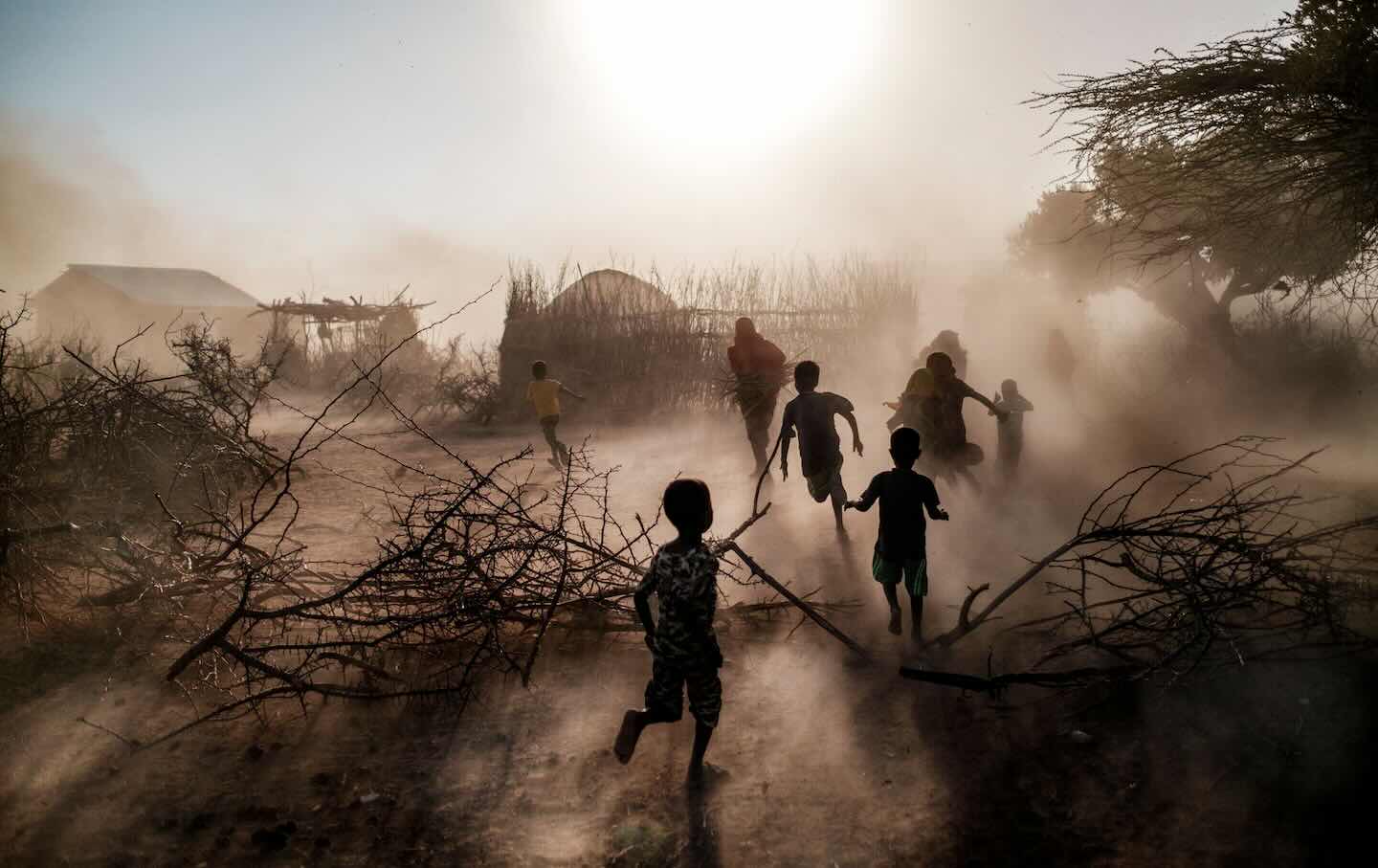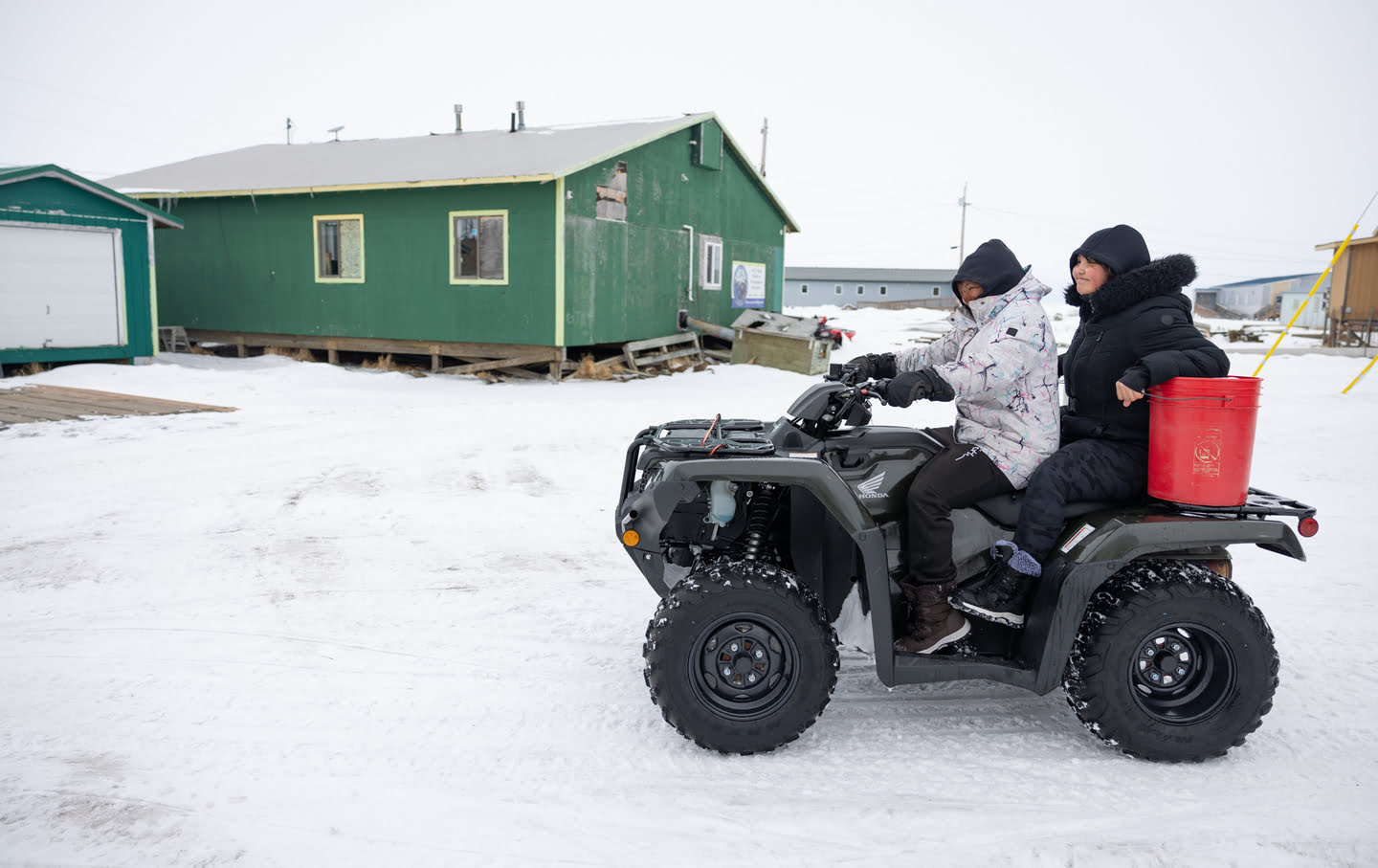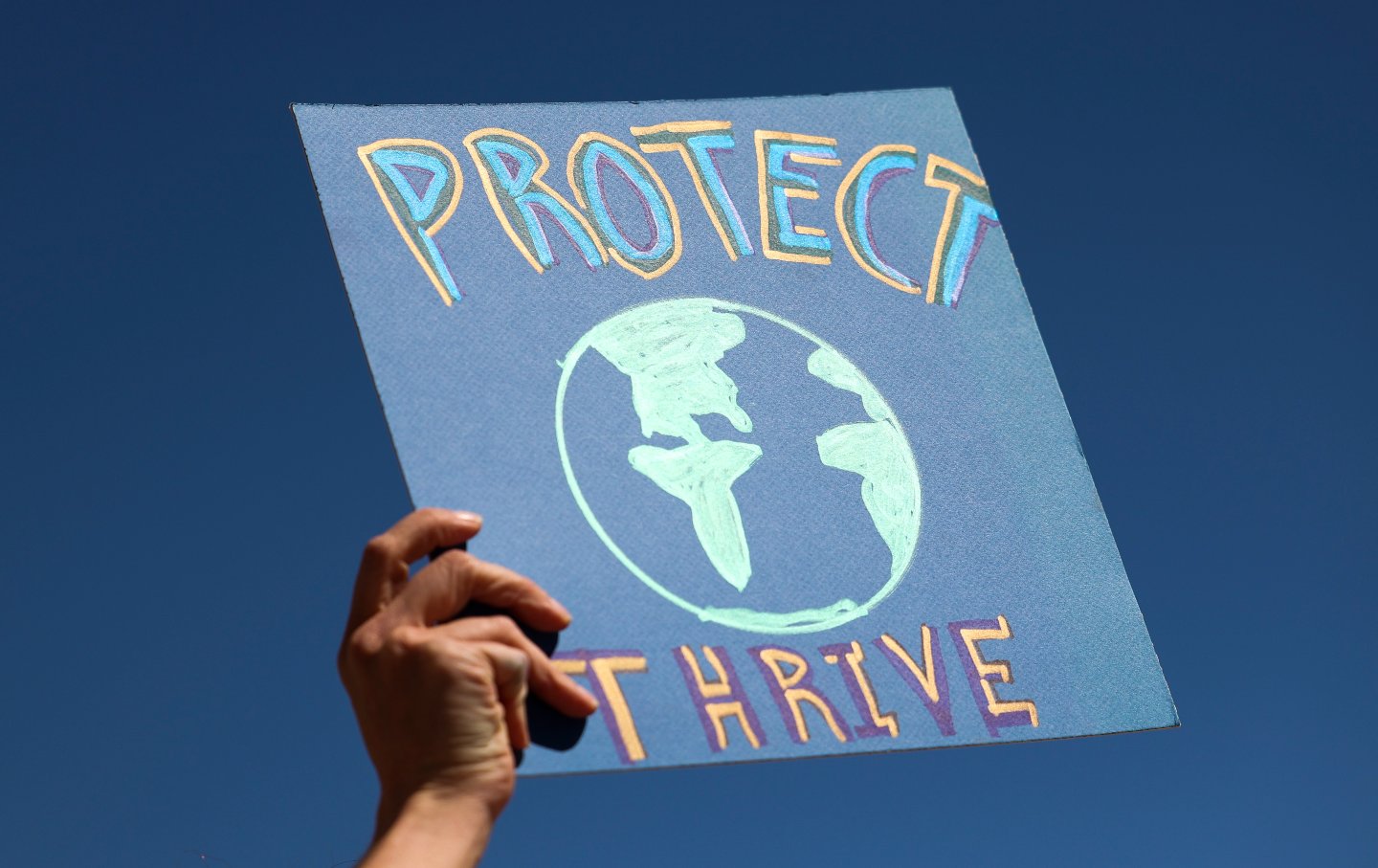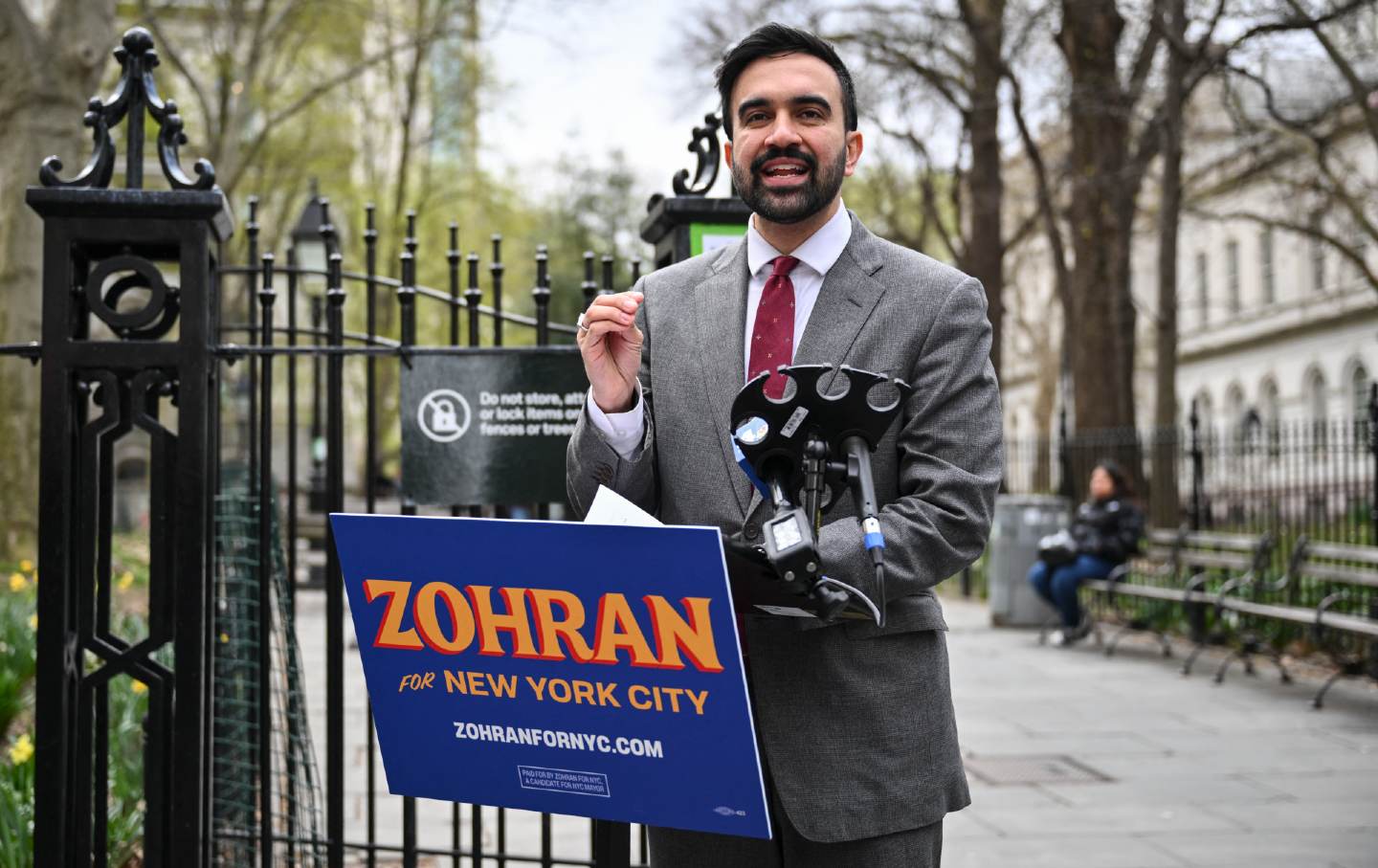How to Save a Forest
Members of the Kalispel Tribe in Washington have become some of the country’s foremost forest caretakers, ministering to the health of lands broken by settlers and industry.

“If you look really closely, the grand fir is dying,” said Ray Entz, who directs the Kalispel tribe’s Department of Natural Resources. I was trailing him in northeastern Washington through their Indian Creek Community Forest, where a few of the trees had faded from evergreen to an aged burgundy red, a sign that they would soon be joining their lost brethren, brittle and fallen on the carpet of dried pine needles. “That’s a climate reaction,” he explained. Summer droughts, coupled with exceptionally soggy springs, had created an ideal environment for laminated root rot, a fungus that was wiping them off the landscape. “We are losing that tree from our understory”—the plant life beneath a forest’s canopy—“at a fast pace.”
Entz pulled out his phone to show me a video he had shot a couple of weeks earlier on a nearby patch of US Forest Service land that bordered a private parcel owned by Stimson Lumber, one of the biggest timberland owners in the West. A legion of Douglas firs, leaning and teetering, drunken giants toppling every which way, a few entirely collapsed onto the ground. A sordid, debaucherous scene. “It looked like a war zone,” he recalled.
I inhaled the aroma of pine. All the Douglas fir around me were probably infected.
“I had somebody say, ‘Oh, climate change won’t affect things for decades or even 100 years,’” said Entz. Yet these changes had all appeared in just the last six years. “I said, ‘Well, let’s go out in the forest right now.’”
The Indian Creek Community Forest is the creation of Entz’s Department of Natural Resources, established by the tribe in 1992 to restore and conserve the environments at the heart of the Kalispel people’s cultural lifeways. Their territory once stretched 200 miles along the Pend Oreille River into Montana and Canada. Refusing to cede their lands, they watched settlers chip at them through the Homestead Act. By 1875, only 395 Kalispel people remained. From their 5,000-acre reservation, the survivors watched their shorelines erode, wildlife habitats flood, and native fish—trout, salmon—disappear, thanks to a 20th-century federal program to “reclaim” the arid West for cities and farms, rerouting networks of waterways through hundreds of reservoirs and dams.
A century later, America realized it had erred. The dams weren’t supplying enough power. Local fish species were now covered by the Endangered Species Act, and Native activists were making a lot of noise about historical dispossession and genocide. So the federal government gave the Kalispel some money to mitigate the wildlife damage. The tribe hired an entry-level biologist, Entz, and three others to create the Department of Natural Resources. Then the department started buying land: 5,500 acres since 1992, more than doubling the tribe’s land base, and increasing tribal access “for hunting, gathering, open space, being Kalispel,” Entz explained. Along with new parcels, housing, and economic development, the tribe now holds over 11,000 acres.
The Kalispel are ministering to the forest and treating its failing health. Yet with only around 700 enrolled members, “we’re a small tribe with a small reservation,” so it was also critical to restore and conserve the surrounding public and private parcels, hoping that the benefits will “spill onto the reservation,” he said. “A rising tide lifts all boats.” It’s why navigating the complex local checkerboard of federal, state, private, and nonprofit lands is one of the Department of Natural Resources’ notable strengths.
I visited in October 2021, and a shrill squawk pierced the curtain of wood. “Turkeys,” Entz grimaced. “I hate them.” Invasive species introduced from the East and Midwest, wild turkeys compete with deer and native grouse for food. “They’re like little velociraptors.”
As Entz explained the root rot, I imagined fungi creeping across property lines, turkeys barging in. It’s comforting to imagine a world made orderly and rational by drawing straight lines on a map to represent borders and property boundaries. Yet among the millions of species on Earth, only humans revere them.
The Indian Creek Community Forest sits on 410 acres, with a native plant nursery for tribal members to pick up seedlings, a pond for them to catch rainbow trout, and a half-mile interpretative trail that’s now a field trip destination for local public schools. On a section with no wildlife habitats, the tribe will build eight new homes. A stargazers’ club from the surrounding community gathers on its hills, storing their telescopes on-site.
Its creation was supported by National Park Service and US Forest Service programs to give communities more tailor-made access to the outdoors, right in their own backyards. It’s an implicit, unspoken acknowledgment that America’s vast public lands are not always accessible to the people they are meant to serve.
The Forest Service provided $350,000 to help purchase the land. Indian Creek was one of the first beneficiaries, in 2012, of its community forest program to help tribes, nonprofits, and local governments buy forestland that is threatened and then conserve it and use it for the community’s benefit. Candice Polisky, the program’s regional coordinator, told me that it was also intended to give local people access to open space and some control over land management, including wetland restoration, recreation, or fire suppression.
Indian Creek was then designed by the local community—both tribal and non-Native—with the National Park Service organizing a barbecue and workshops to brainstorm and solicit ideas. (A counterpart to the gran- diose national parks it runs, the agency’s Rivers, Trails, and Conservation Assistance Program helps nonprofits, groups, and tribes create public recreation opportunities close to home.)
Also, the forest includes a demonstration site for small forest landowners to see the effects of nine different techniques for maintaining a healthy forest, from hand-thinning and machine mastication to prescribed burns. The latter—fighting fire with fire—was widely used in this region until the settlers arrived.
Architects from Washington State University’s landscape architecture program then took the ideas and, pro bono, made conceptual designs for parts of the forest, while graphic design students from Eastern Washington University helped create the signage for the trails. Stephanie Stroud, the National Park Service community planner who ran the community engagement effort, took notice of the tribe’s inclusive stance. “The Kalispel Tribe, I think, is so successful because they integrate themselves with the surrounding community,” she told me. “They have this amazing resource, this asset, and they welcome the community into it.”
As we walked through the forest of towering pines, I asked how the Kalispel’s Salish ancestors might have used this land.
Mike Lithgow, the department’s outreach coordinator, pointed down the slope from the forest to the mouth of a creek, an archeological site called the Place of Many Bones. A village or campsite stood right where the fish go to spawn, a bounty for fishing, but sometime in the last 500 years, it was decimated by influenza or chicken pox—European diseases.
Popular
“swipe left below to view more authors”Swipe →The forest we stood in was likely a “hunting and gathering management area,” speculated Entz. “At the end of the year, when they were done collecting berries, done hunting, the last guy out: light a match, manage the forest.”
This would have kept the forest more open. Without trees crowding the understory, sunlight would caress the soil, producing a richer forest ecosystem of huckleberries and medicinal plants for humans, and grasses and shrubs for the deer they hunted. Charcoal, left behind when fires don’t grow too intense, sequester carbon, enrich the soil, and help it retain water. But European settlers believed in suppressing fire and leaving the wilderness untouched.
Forestland managers are beginning to see the wisdom of these ways. Yet the legacy of slashed public-lands budgets and staff have left the nation’s largest forestland manager, the US Forest Service, unable to actively manage its 193 million acres. (Its staff has more than halved since 1992.) On the flip side, environmentalists have also blocked attempts to sell off Forest Service properties, knowing that big timber companies and real estate developers will snap them up. Paradoxically, this has trapped the forests with an owner who lacks the means to care for their health.
In 2015, wildfires torched at least 18,500 acres in the region, stopping just shy of the reservation border, the largest wildfire in the memories of tribal members at the time. The tribe questioned if they were doing enough with their neighbors to protect the reservation.
“I said no,” Entz recounted. “But we have a tool.”
The Tribal Forest Protection Act requires the federal government to consider tribal proposals to manage forest health on Forest Service and Bureau of Land Management lands bordering reservations. Entz’s department did just this, and three years after the fire, the Forest Service adopted their Sxwuytn Project—Sxwuytn means “trail” in Salish—to return forests to a more natural state.
There in a clearing among the pines, I asked how he would achieve this. Entz glanced around. If a fire crept to this patch of forest today, it would burn every tree, he explained. Flames would first consume the grass and carpet of pine needles, then leap up to the grand and Douglas firs—the trees that thrive at medium height in the shade and crowd the understory. Flames could easily hop between them, then up past the long, bare legs of the ponderosas, licking their leafy crowns and torching them.
So Entz would get rid of some of the firs. Without them, the charcoal of barbecued grasses and shrubs would barely damage the ponderosas. These leggy pines are protected by a thick bark resembling interlocked puzzle pieces, which pop off when they’re singed like dried-up scabs. The fires would lose a stepping stone toward the sky. Also, prescribing regular burns would keep the fir-eating fungi, the root rot, at bay.
But carrying this out across the Sxwuytn area is a whole other matter. The 97,000 acres include most of the Kalispel reservation, state lands, and the Colville National Forest. In the sickly woods around the Browns Lake Campground, the Forest Service contracted Entz’s staff to saw down diseased and dying trees, restore the health of the forest, and build a heritage interpretation trail sharing tribal knowledge of the bull and cutthroat trout. By late 2023, they were planning a prescribed burn across state and tribal lands, the first cross-boundary burn with the state in Entz’s memory. The hope of Sxwuytn was for the Forest Service to enlist the tribe on federal lands, cutting down species that risk disease, seeding legacy trees (like lodgepole pines), and prescribing burns that will cull much of the younger growth. Lodgepoles, ponderosas, larches, and cedars would dominate. Some grand and Douglas firs would remain, but the thick understory of young trees will be gone, allowing one big tree to survive.
Entz’s department knows how to do this because they treat their own lands this way, a couple of hundred acres at a time, before moving onto another patch, all on a 15-, 20-, or 30-year cycle. They are also experienced in working with private landowners, who hold 41 percent of the Sxwuytn area and are encouraged, though not required, to participate.
Polisky told me that the mix properties, each with a different owner, is one of the biggest barriers to a community’s control over land management and that the community forest program aims to address this by helping communities buy conservation land. She sees the Kalispel as a model for working around these fragmented landscapes. “At every single juncture, I think to myself that they have worked across ownership,” she said.
The night before I visited, Entz and his staff spoke to property owners along Harvey Creek, an area north of the reservation (but not within the Sxwuytn area), where the department bought a parcel to restore a bull-trout spawning ground and reconnect the waterway to a lake. The Kalispel Tribe needed permission to access these private lands to do the work, but the owners were skeptical. Was the tribe some “crazy environmental group that’s going to take away their property rights?” Entz recalled.
“Once we’re done, we’re out,” he told them. In fact, the process would be far less invasive than a pipeline easement that gives a company access to the land for decades. Plus, the restoration, unlike a pipeline, would add value to their property. By late 2023, the landowners seemed to be coming around.
In an ideal world, Entz said he would “create a larger connected land base for our tribal membership and the community and protect it from further development and subdivision.” Such a vision stokes fears among outsiders that the Kalispel are trying to take over and kick everyone out. But unlike the community forest, private lands are already closed, including the vast local tracts owned by railroad and timber corporations. The tribe, by contrast, allows non-tribal people to hunt ducks on some of their lands, and hopes to create even more opportunities for their neighbors. “I’m kind of hoping that someday, I can get a turkey program,” he added. “Because I’d like to get rid of some turkeys.”
In fact, the real threat to the lands was coming from another direction. Entz pointed up a slope from the entrance of Indian Creek. The Kalispel Tribe had tried to buy a 1,200-acre forest property that was up for sale, but “we just couldn’t pull the trigger.” A developer swooped in for the purchase and sliced it into 20 parcels to build new homes. Each will likely have its own driveway, sewer, and power connections, and probably a pet dog—“wildlife intrusions,” as he called them. “More homes in the exurban forest environment, which are now susceptible to wildfire,” place “an extraordinary strain on county infrastructure,” including the fire department, he said.
Real-estate prices had shot up in the previous year. Entz was observing an “amazing amount” of forest conversion, trees clear-cut to make way for farms or development. “It’s a little disturbing,” he remarked, “but it’s just our new reality.”
I rode with Entz and Lithgow as we traversed the reservation, tracing the Pend Oreille, its waters sparkling against the mossy green of the forested slopes. Bundles of brown fur dotted a field by the road—the tribe’s bison herd, populated in 1973 by a starter herd from the Theodore Roosevelt National Park in North Dakota. The species are not native to Washington State, and the Kalispel people once traveled to the territory of the Bitterroot Salish—now the Flathead tribe in Montana—to hunt them. Nevertheless, the herd was thriving in their new home.
Ten minutes later, we pulled into a nondescript property where it all began: the 460-acre Flying Goose Ranch that the federal government bought on their behalf in 1993. “It was beat,” Entz recalled. Cows had eaten everything six feet above ground, and “there was not a leaf on a bush.” The field was strewn with the bones of discarded cars, farm implements, bed rails repurposed as fences, tires, and trash. “That was my very first crack at wetland floodplain restoration.” Lying on the northern border of the reservation, they placed the parcel into trust in 1997.
We rolled across the pasture toward the cottonwood forest they had restored on the riverbank, reconnecting the land to a floodplain. Even after years of drought, the grass was dense and scruffy, and the wetland pasture and forest were a rich habitat for eagles, deer, beaver, warblers, and muskrat. “It’s really a strong winter range, and it’s a strong fawning, calving area in the spring,” Entz explained.
I nodded. Somehow, this tribe, with a population smaller than my Brooklyn block, had become one of the region’s foremost wetland forest doctors. To do this, they had learned to navigate the multitude of relationships defining the property checkerboard—relationships with conservative landowners, progressive land trusts, federal agencies, and varying levels of government. But as long as our society continues adding fuel to the climate crisis, they are perpetually scrambling just to catch up.
Stationed ahead, right where pasture meets forest, a white-tailed deer watched us approach, body plump, coat smooth. “That is one healthy doe,” remarked Entz.
We crawled forward, and she stood her ground.
“Well, she’s probably got a fawn somewhere in here,” he speculated. We stopped a foot away. Practically frozen, she was like a Buckingham Palace guard.
Trudging through the grass to the front of the car, Lithgow pulled out his phone. Click. Click. Click. Then he paused. “Her nose is dripping!” I could see it now, and the drooling too.
“I wonder if she did contract bluetongue,” muttered Entz.
What was bluetongue?
Entz explained that it is a virus the deer get from gnats—either that or it was another similar virus, EHD, epizootic hemorrhagic disease. Outbreaks were usually worse during droughts, when the deer wander down to the river on mudflats that are typically covered by water. The gnats emerge, latch on, cover their bodies.
“They had a huge die-off over there,” he said, gesturing way beyond the river. “I thought we would escape it just because we have the river and some extra water.”
Nudging the Jeep forward, the bumper finally grazed her rear.
One swift leap, a spring through the air, and she vanished into the forest. Graceful and unnerving, she was like an enigmatic spirit creature from a Hayao Miyazaki film.
I asked if she would die.
“She might make it.” Entz shrugged. “You never know.”
Stopping in front of the intake facility pumping river water up, we jumped out. Entz wanted to show me the rainbow-trout hatchery that supplies the Indian Creek fishing pond. Following him through tall grasses, down toward the water, I admired the soft curves of the mountains rolling beyond the opposite bank. Then he stopped. “Yep, we got an EHD outbreak.”
Ten feet from the water, the body of a chubby white-tailed deer lay toppled in the grass, her white belly soft. Eyes wide open but dull like felt, a dried red foam oozed from her nose.
“That one was pretty healthy too,” he remarked, peering down at her face. “She hasn’t been dead more than a day.”
“The other one’s not gonna make it,” concluded Lithgow.
They told me that the virus tears the animals apart from the inside: internal bleeding, lungs and liver hemorrhaging, capillaries and blood vessels falling apart. They wanted to get the word out to other landowners that it had appeared, maybe through the local 4-H club.
More on saving the forests:
“Well, we didn’t escape it,” sighed Entz. “We usually do.”
The area was not typically affected by drought. On this Flying Goose Ranch, the department had even expanded the wetland, removing the old drains and letting the water flow back. But despite the grasses and shrubs that sprang forth from the mudflat, and the robust cottonwood forest now cleaving pasture and river, bigger forces are unsettling the environment.
“The drought was pretty severe,” said Entz. The viruses are “garbage that just floats up.”
I stared at the deer, weighing the serenity of dying before the clear rushing water, with the indignity of strangers happening upon your corpse.
I averted my eyes.
“Is this a climate thing?” I asked. “Yes,” replied Entz. “You’re gonna see more of this.”








